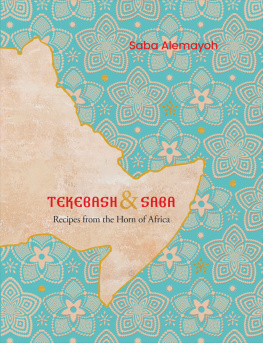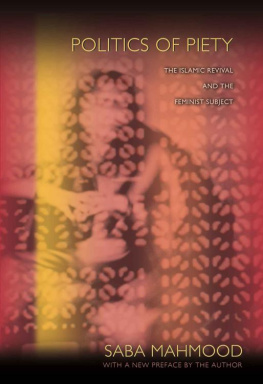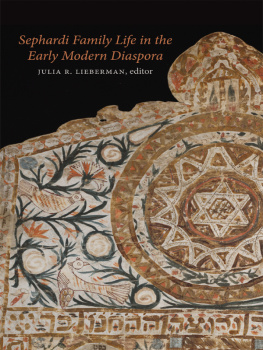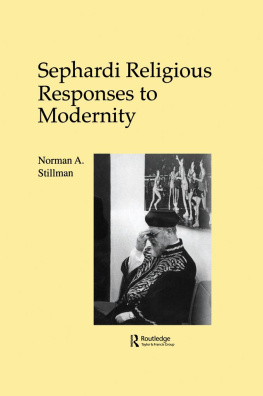Sephardi and Mizrahi
Jews in America
The Jewish Role in American Life
An Annual Review of the Casden Institute for the
Study of the Jewish Role in American Life
Sephardi and Mizrahi
Jews in America
The Jewish Role in American Life
An Annual Review of the Casden Institute for the
Study of the Jewish Role in American Life
Volume 13
Steven J. Ross, Editor
Saba Soomekh, Guest Editor
Lisa Ansell, Associate Editor
Published by the Purdue University Press for
the USC Casden Institute for the Study of the
Jewish Role in American Life
2016
University of Southern California
Casden Institute for the
Study of the Jewish Role in American Life.
All rights reserved.
Production Editor, Marilyn Lundberg
Cover photo:
1920s postcard sent from the Levy family of Rhodes to their family in Los Angeles. The top contains the Ladino (Judeo-Spanish) handwriting called Solitreo, which when transliterated states: Kon este vapor parto el 12 de Desiembre (I am leaving on this steamer on December 12).
Courtesy of Aron Hasson of the Rhodes Jewish Historical Foundation.
Cloth ISBN: 978-1-55753-728-7
ePDF ISBN: 978-1-61249-424-1
ePUB ISBN: 978-1-61249-425-8
Published by Purdue University Press
West Lafayette, Indiana
www.thepress.purdue.edu
Printed in the United States of America.
For subscription information,
call 1-800-247-6553
Contents
EDITORIAL INTRODUCTION
Saba Soomekh, Guest Editor
Saba Soomekh
The Maurice Amado Foundation: Promoting Sephardic and Jewish Cultural Heritage in AmericaAn Interview with Elaine Lindheim and Sam Tarica
Molly FitzMorris
Language Mixing in Seattle Ladino: Influence or Interference?
Bryan Kirschen
Diglossic Distribution among Judeo-Spanish-Speaking Sephardim in the United States
Joyce Zonana
And she loved brown people: Jacqueline Shohet Kahanoffs Affirmation of Arab Jewish Identity in Jacobs Ladder
Devin E. Naar
Sephardim since Birth: Reconfiguring Jewish Identity in America
Aviva Ben-Ur
Diasporic Reunions: Sephardi/Ashkenazi Tensions in Historical Perspective
David Suissa
Negotiating Exile: An Arab Jew in America
Gina Nahai
Becoming American
Shulamit Nazarian
Iranian Jewish Art Today: What Cultural Legacy Are We Handing Down?
Rabbi Daniel Bouskila
The Classic Sephardic Spirit
As a child of Ashkenazi Jewish Holocaust survivors, I grew up in a Queens, New York shtetl, seeing the world divided not only between Jews and non-Jews, but between post-war Jewish immigrants who referred to themselves as greeners and their American-born children. Yet there was another world of Jewish immigrants who were little known to Ashkenazi offspring such as myselfa Sephardic and Mizrahi world that was experiencing distinct yet similar battles between the preservation of their unique Sephardic heritage and their desire to achieve the American dream in a place where fellow Jewslet alone Christianswere not always so accepting of their cultural and religious differences.
This volume explores the myriad ways in which Sephardic immigrant communities have engaged in the timeless struggle of how to remain distinct yet successful Americans. From geographic to linguistic to religious to artistic struggles involving the multiplicity of identities that mark immigrant communities, this volume examines how Jews from Rhodes, Morocco, Iran, Iraq and Egypt have experienced many of the same the challenges that Ashkenazi Jews contended with for decades. While Hollywood may have built an image of the American Jew as a bespectacled Woody Allen who is seen as a black hat Hassid in the eyes of his gentile in-laws, the reality of the landscape of American Jewry today is much different than the schmaltz we are fed by the movies. The USC Casden Institute is delighted to present a volume that explores and celebrates the trials and achievements of the Sephardic and Mizrahi communities of America. I owe a special thanks to Dr. Saba Soomekh for her tremendous work as guest-editor and to the Tarica and Amado families for their dedication to the advancement of Sephardic Studies as an academic field and to the steadfast friendship they have shown the USC Casden Institute over the years. May we grow from strength to strength Mashallah!
Steven J. Ross, Myron and Marian Casden Director
The theme of longing and belongingmaking yourself at home in a new country while yearning for and holding onto the memories of your place of birthis present in immigrant communities throughout the world. This is especially true among Diaspora Jews, who have a spiritual longing for Israel. In Psalm 137, Jews declare, If I forget you, O Jerusalem, let my right hand wither. Yet Diaspora Jews have an additional longing for their place of birththeir country outside of the spiritual homeland of Israel.
Since the Babylonian exile in the sixth century BCE, Jews have lived all over the world. Sephardic Jews developed communities on the Iberian Peninsula (Spain and Portugal) around 1000 CE, creating their communitys distinct identity and Judeo-Spanish language, called Ladino. With the Alhambra Decree and the Spanish and Portuguese Inquisition in the late fifteenth century, many Sephardic Jews escaped Europe and made their home in what was then the Ottoman Empire (the Middle East, North Africa, the Eastern Mediterranean, and the Balkans). These Jewish communities practice Sephardic customs, laws, and liturgy imparted to them by the Iberian Jewish exiles over the last few centuries. As I am writing this introduction today, it is all over the news that Spain and Portugal are offering Sephardic Jews dual citizenship in order to make amends for the Inquisition. It is estimated that approximately 3.5 million Jews could potentially apply for Spanish and Portuguese passportsproving it is never too late to right your wrongs, even if it is five hundred years later.
Although often confused with Sephardic Jews (because they share many similar religious customs), Mizrahi Jews come from Middle Eastern ancestry; they do not trace their lineage to the Iberian Peninsula. The earliest Mizrahi communities date from Late Antiquity, and the oldest and largest of these communities comes from modern-day Iran (Persia), Iraq (Babylonia), and Yemen. With the establishment of the State of Israel and the subsequent 1948 Arab-Israeli War, most Mizrahi and Sephardic Jews were either expelled by their Arab rulers or chose to leave. Most live in Israel or the United States. The mass migration of Iranian Jews from Iran occurred with the 1979 Islamic Revolution, during which a majority of Iranian Jews settled in Southern California or New York.
Although the first Jews who settled in America in the mid-seventeenth century were of Sephardic ancestry, it was not until the mid-nineteenth century that large-scale immigration of Jews to America occurred, most of whom were of Ashkenazi descent. Sephardic ascendancy faded, and Ashkenazi customs and practices became, and still are, the dominant Jewish tradition in America. Unfortunately, Sephardi and Mizrahi history, customs, and traditions were often absent from portrayals of American Jewry. American Jewish cuisine, art, literature, and the study and portrayal of American Jewry in academia, movies, and television were from an Ashkenazi perspective. Matzo ball soup, gefilte fish, and the Yiddish language were just as foreign to the Sephardi/Mizrahi Jew as they were to the non-Jew in America. As Elaine Lindheim, whose interview appears in The Maurice Amado Foundation in this volume, stated, We are Sephardic we came from the olive oil rather than chicken fat parts of the world.












